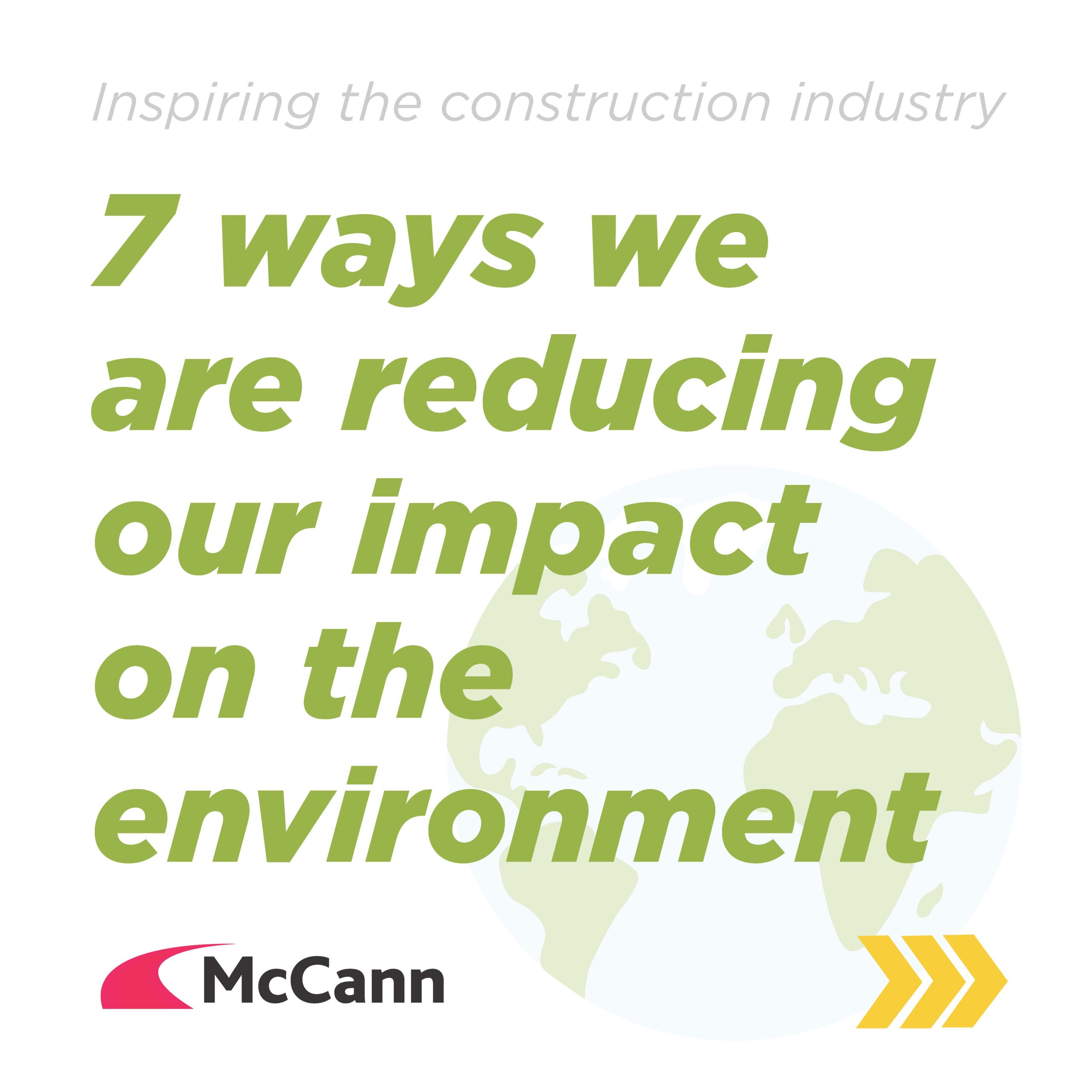The impact of the construction industry on the environment and 7 ways we are trying to combat our impact.
Civil and Electrical engineering play a vital role in shaping our modern world. Civil engineering is a field with significant impact on the built environment and infrastructure, from designing and constructing buildings and bridges, to upgrading critical highways, footways and cycleways. However, it’s important to recognise that these activities also have a profound effect on the environment.
Earth Day is celebrated annually on April 22nd and is designed to encourage all to take action to educate, advocate and mobilise in the goals to help the environment. This Earth Day, we are highlighting the impact of the construction industry on the environment, what challenges we face within the industry in the aim to be more sustainable and what McCann is doing to reduce our impact.
Impact of the Construction Industry on the Environment:
Despite the many benefits of the construction and civil engineering industry, providing crucial infrastructure, developments and modernisation for the future, it’s not without its impact on the environment. Here are six of the main impacts that the construction industry has on the environment:
- Land clearing or deforestation – This alters biodiversity, soil health, water cycles, and leads to habitat loss.
- Disruption to wildlife and ecosystems – By removing trees and vegetation, we alter the natural habitats of many species, leading to a loss of biodiversity and reduction of wildlife.
- Water, air and noise pollution – The release of chemicals and pollutants, and site waste materials into air and water bodies has negative impacts on the environment. Noise pollution, such as vibrations from power tools and heavy machinery, negatively impacts the animals surrounding the sites.
- Energy consumption – The depletion of natural resources leads to the emission of greenhouse gases.
- Waste generation – Construction debris, demolition waste, and excavated materials can contaminate soil and water sources.
- Climate change impact – The construction industry can increase global temperatures and emit greenhouse gases.
What challenges does the construction industry face in its aim to be greener?
Initial cost and financial constraints – There is often a higher initial upfront cost with sustainable materials and technologies, but when considering the whole life cycle cost of the solution, it leads to cost savings. More work needs to be done to encourage end clients to look at the whole life cycle cost. Another way to overcome these challenges could be the further introduction of funding that overcomes financial barriers, such as green loads or grants, to encourage the adoption of sustainable practices.
Knowledge and skills gaps – Training in modern sustainable techniques and building practices like low-carbon materials and advanced technologies is still an area that globally needs improvement. Things like upskilling initiatives or skills hubs might help improve this.
Limited supply and development of materials and technology – There is a limited supply of sustainable materials and a lack of development of technology. Certain areas are still waiting on a big breakthrough, such as restrictions on electrifying vans and HGVs.
Upgrading and retrofitting limitations – Upgrading older infrastructure and buildings to sustainable practices and equipment typically comes with complex challenges, such as regulatory restrictions on historic buildings and higher costs.
How are we reducing our impact?
At McCann, we are conscious of the impact our works have on the environment and are looking at ways to introduce more sustainable practices and materials into our contracts and day-to-day business running.
Ensuring that we are fully compliant with current legislations, memberships and accreditations – We recently completed our PAS 2080 audit, which specifies the requirements for the management of carbon across the lifecycle of buildings and infrastructure. It emphasises early collaboration, defined roles, and integrated decision-making for sustainability. Committing to PAS 2080 shows dedication to decarbonising the built environment and effective carbon management.
We are fully accredited to ISO 14001, the standard for Environmental Management Systems, which allows us to be compliant with environmental laws and regulations and promote sustainable practices.
We are part of the Science Based Target Initiative, which covers our plan to set tangible targets on how we are reducing carbon emissions in line with the Paris Agreement (to limit the global average temperature increase to 1.5ºC above pre-industrial levels).
Reduce Greenhouse Gas Emissions – McCann is committed to achieving net zero by 2040, with an interim science-based target to reduce our scope 1 & 2 emissions by 42% by 2030. Our Carbon Reduction Plan covers elements from alternative fuel options for our fleet and plant, trialling low-carbon plant and hand tools, reducing emissions within our supply chain (improving environmental product declarations), reducing water use by 20%, and achieving zero-waste-to-landfill status.
You can view our full carbon reduction plan here.
Leverage renewable energy sources – Using solar, wind, and hydrogen energy sources over diesel, coal and nuclear fuel sources is significantly better for the environment due to the reduced emissions. Where possible, we are utilising these renewable energy sources on site and in our office facilities.
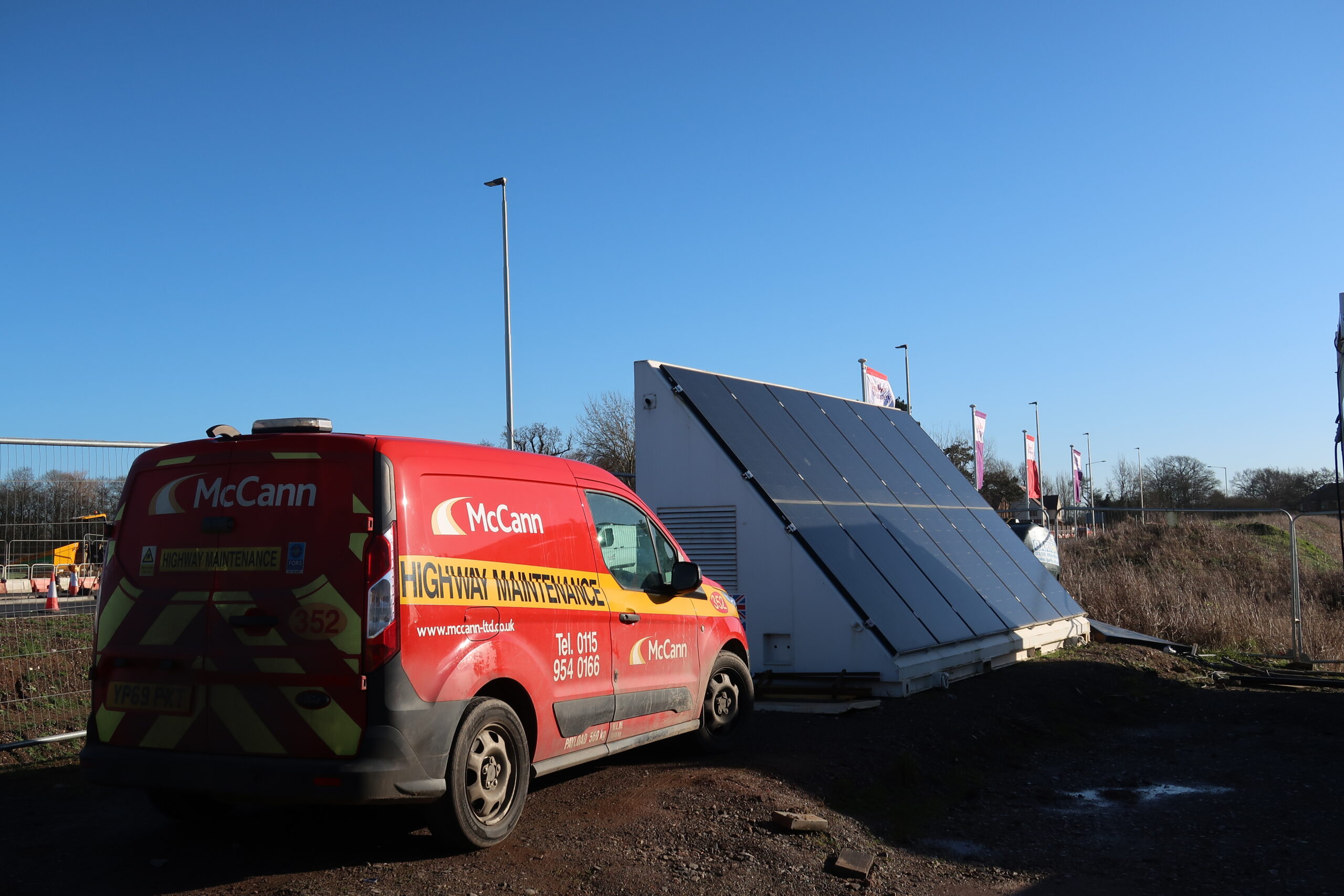
Examples include Solar-Powered Welfare Cabins and Hydrogen-Powered Tower Lights. We have used Solar-powered welfare cabins on our Taylor Whimpey A5 widening project to harness the sun to support the site welfare facilities. By utilising renewable energy, we can save an average of 92% on fuel and emissions compared to a diesel generator. By using hydrogen-powered tower lights as an alternative to the diesel-powered versions, we are lighting work areas with emission-free energy, which leaves nothing but water vapor behind.
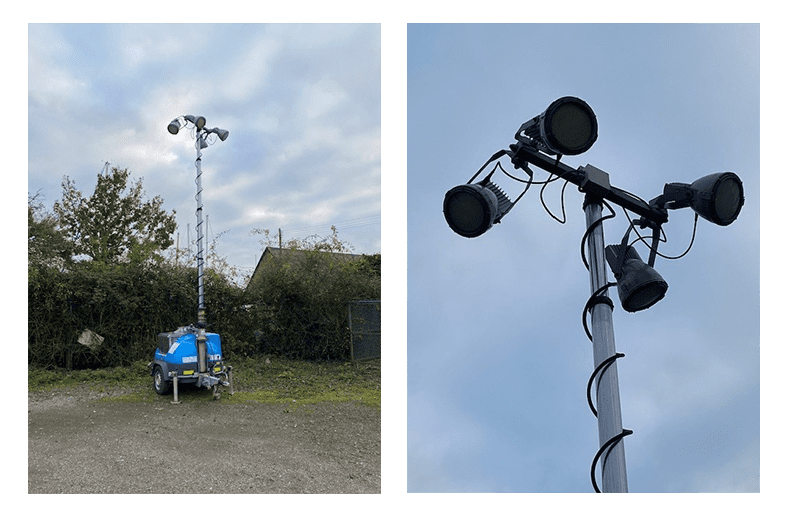
Promote green building materials – Throughout our projects, where possible, we are adopting recycled materials and other components; this reduces the need for virgin resources. One of the examples where we have implemented low-carbon alternatives is on our Fargate Public Realm Works, Sheffield for John Sisk & Sons Ltd, where we have used Low-Carbon Incinerator Bottom Ash Aggregate as an alternative to Type 1. This allowed us to save over 90% of CO2 emissions, 20% less on materials, and 20% less vehicle movements, compared to alternatives.
Reduce Waste – The construction industry is one of the top producers of global waste. We have worked with waste broker Reconomy for our waste and resource management. To date in 2025, from 433 tonnes of waste produced, we have diverted 99.6% from landfill.
Outside of our partnership with Reconomy, our teams reduce waste on site by reusing excavated materials in cut and fill operations. With end-of-life materials that we remove from site, rather than just send them to landfill, we often reuse these in social value initiatives. Through Outdoor Play and Learn (OPAL) initiatives within schools it allows us to reuse cable drums and palettes to enrich children’s learning.
Upskilling our workforce and supply chain – Our team have been developing awareness training for roll out within our team and wider supply chain. These equip employees with up-to-date, relevant and critical information on how to reduce carbon emissions.
Coming up this year, we have a Net Zero Supply Chain workshop hosted with Supply Chain Sustainability School for our National Highways Scheme Delivery Framework (SDF) Midlands team and supply chain.
Sustainable Social Value on Projects – To complement the work within our projects, we are also looking at social value initiatives that focus on the environment and sustainable practices.
Initiatives include supporting local wildlife and nature conservation through partnerships with the Wildlife Trust, reusing materials for OPAL, volunteering our time for litter picking and gardening in community allotments, donating sheds and greenhouses for community gardens, and planting wildflowers, to name a few.
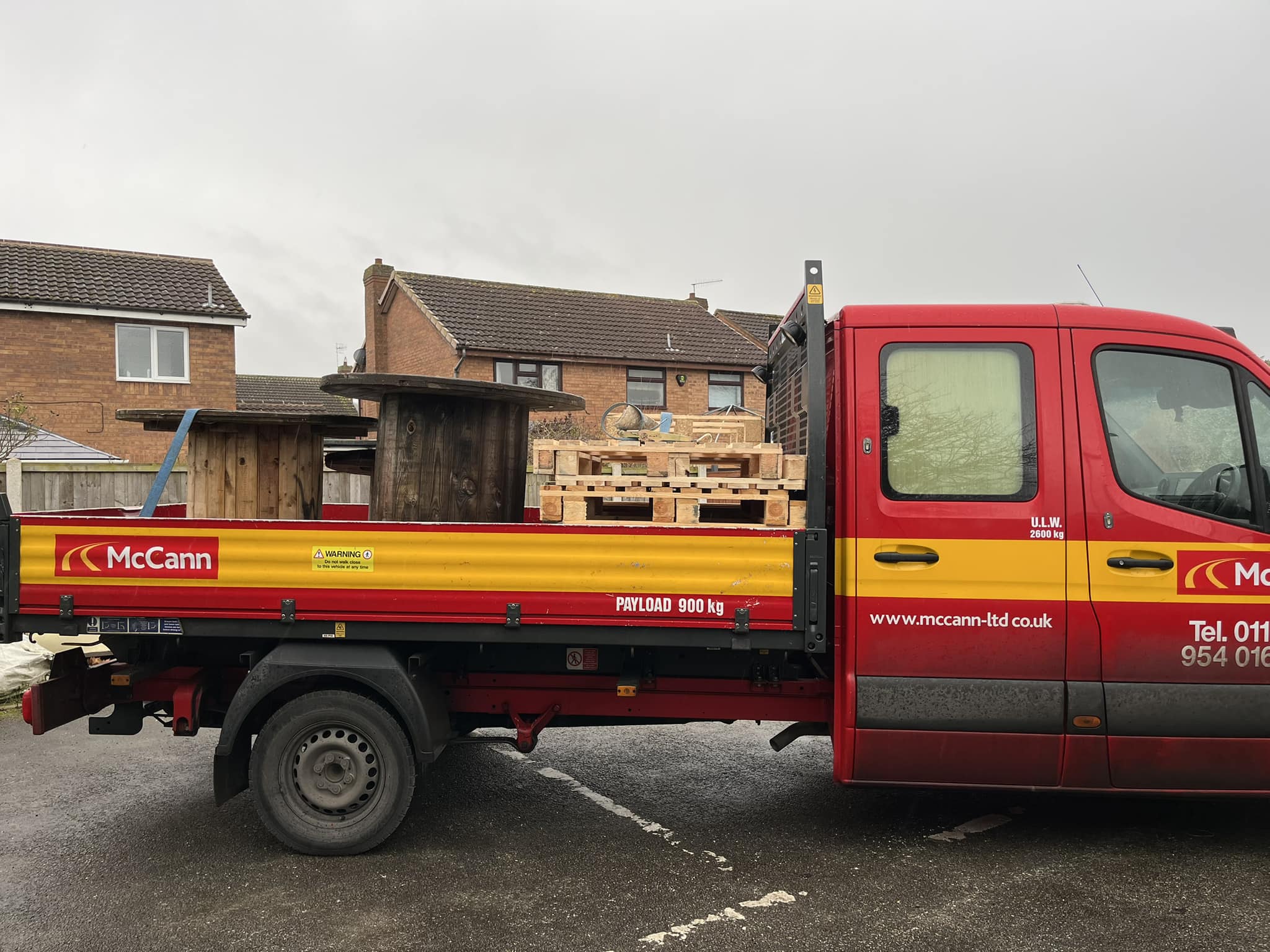
Summarised by our Environmental Manager, Eleanor Mangham, “Sustainability for McCanns means making meaningful, measurable change and reducing our environmental impact while delivering quality and value.
Over the past year, we’ve made good progress: achieving PAS 2080 certification, trialling low-carbon materials and plant, developing awareness training, and publishing our Net Zero Plan. Looking ahead, our focus is on setting science-based targets, expanding our register of low-carbon products and services, and delivering our first complete PAS 2080 project, building on our commitment to continuous improvement and climate leadership.
Back to top